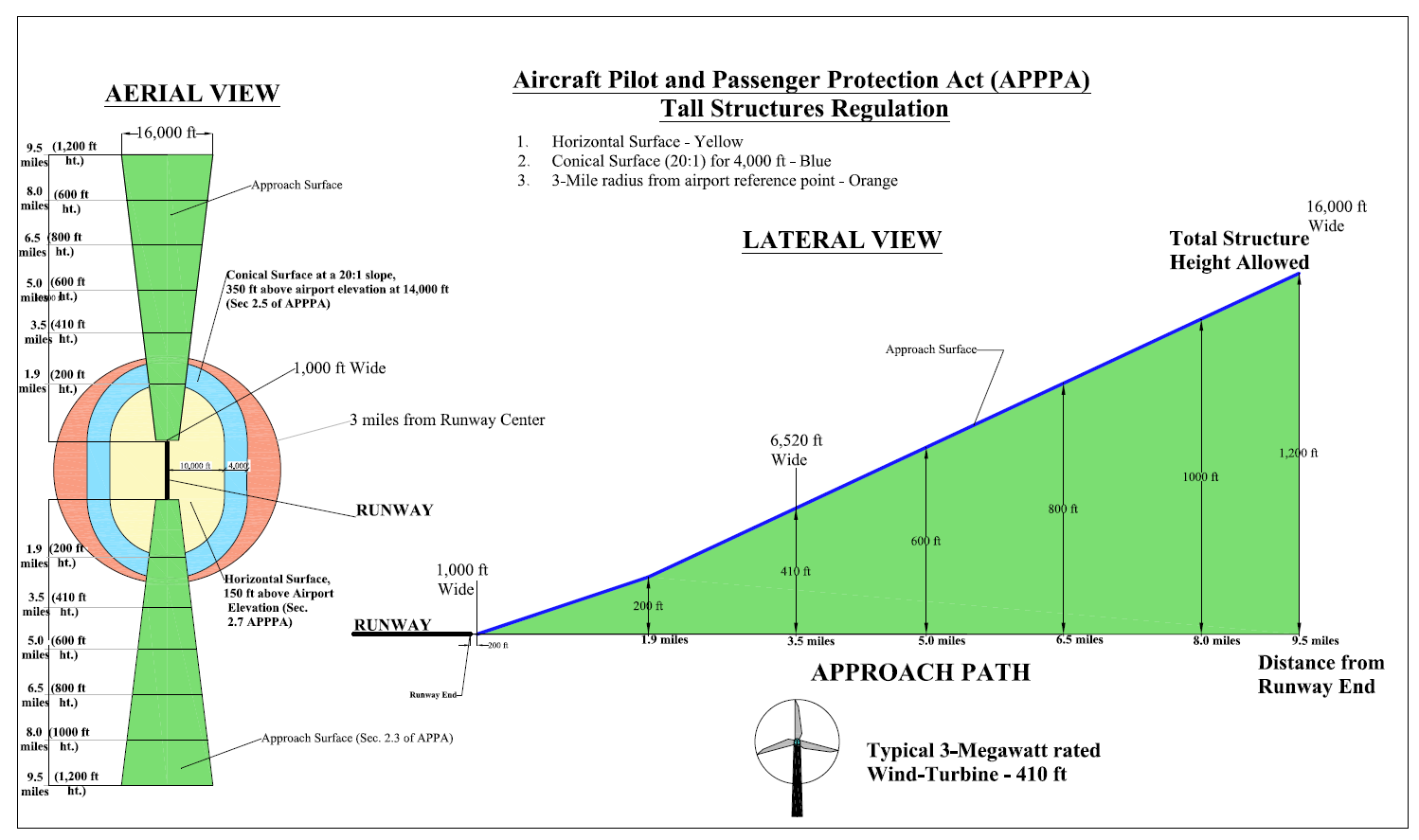Aircraft Pilot and Passenger Protection Act (APPPA)
Ensuring Construction Compatibility Within the Oklahoma Airport System
APPPA AT-A-GLANCE
The Aircraft Pilot and Passenger Protection Act (APPPA) is a state law passed in 2010 intended to increase safety near airports in Oklahoma. This law regulates the height of structures built or erected near public-use airports and military installations in the State. APPPA also regulates construction projects that may be deemed incompatible to normal airport operations due to safety concerns for individuals both in the air and on the ground. The Oklahoma Department of Aerospace and Aeronautics administers this law through an application process. For more information or application questions, please contact Thomas Galloway at (405) 604-6900.
AVIATION SAFETY
Protecting Lives Around Oklahoma Airports
The Aircraft Pilot and Passenger Protection Act, effective Oct. 1, 2010, protects the lives of aircraft passengers and pilots as well as those that live and work around a public-use airport in Oklahoma. The law ensures that development around an airport is compatible with aircraft takeoffs and landings. The new law also applies to military airports such as Tinker Air Force Base, Vance Air Force Base, and Altus Air Force Baseby preventing incompatible land use around those airports.
Protecting the integrity and safety of military aircraft operations and airspace used by the military for training has been critical to Oklahoma’s success insofar as preventing base closures or transfers of significant missions. The act does not apply to privately owned airports that are for private use only or to publicly owned airports in cities with populations of more than 500,000.
Additionally, any person that wants to build a structure for an incompatible use within 500 feet of an airport runway centerline or in the runway protection zone would have to obtain a permit first from the Oklahoma Department of Aerospace and Aeronautics. Homes, schools, child care facilities, hospitals, nursing homes, churches, storage facilities and other buildings, or areas where people would gather, would all be considered incompatible with airport operations, including the landing and takeoff of aircraft.
Under the act, any person that wants to build any structure that is in excess of 150 feet above an airport’s elevation and within three miles of the airport must also first obtain a permit from the Department of Aerospace and Aeronautics. Alterations to existing structures within that three-mile radius also need a permit if the height of the resulting structure exceeds 150 feet.
Between 1995 and 2005, the most recent statistics available, more than one airport a week was closed in the U.S. due, in large part, to encroaching development. He stressed that the act was designed not to stop development around airports but to ensure that it was compatible with airport operations, and to protect the flying public as well as those who live and work near a public-use airport.


